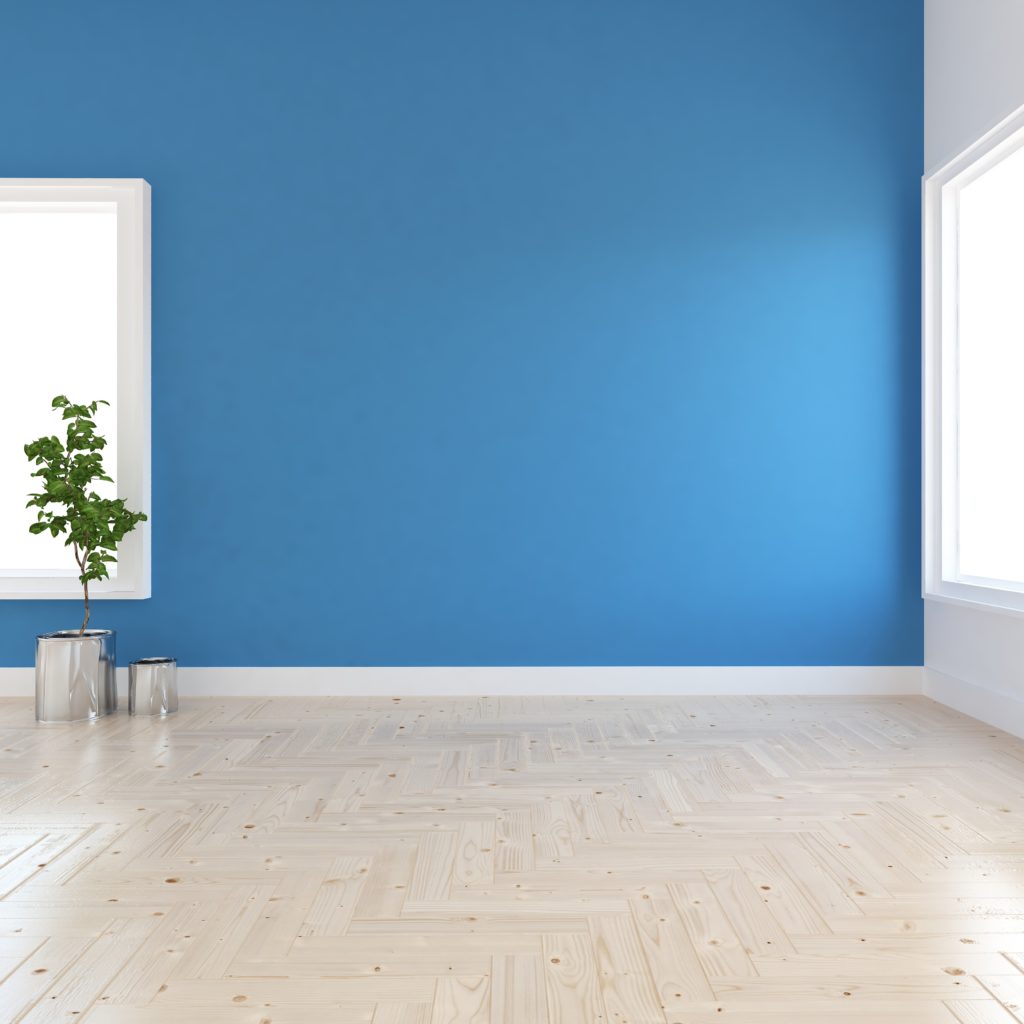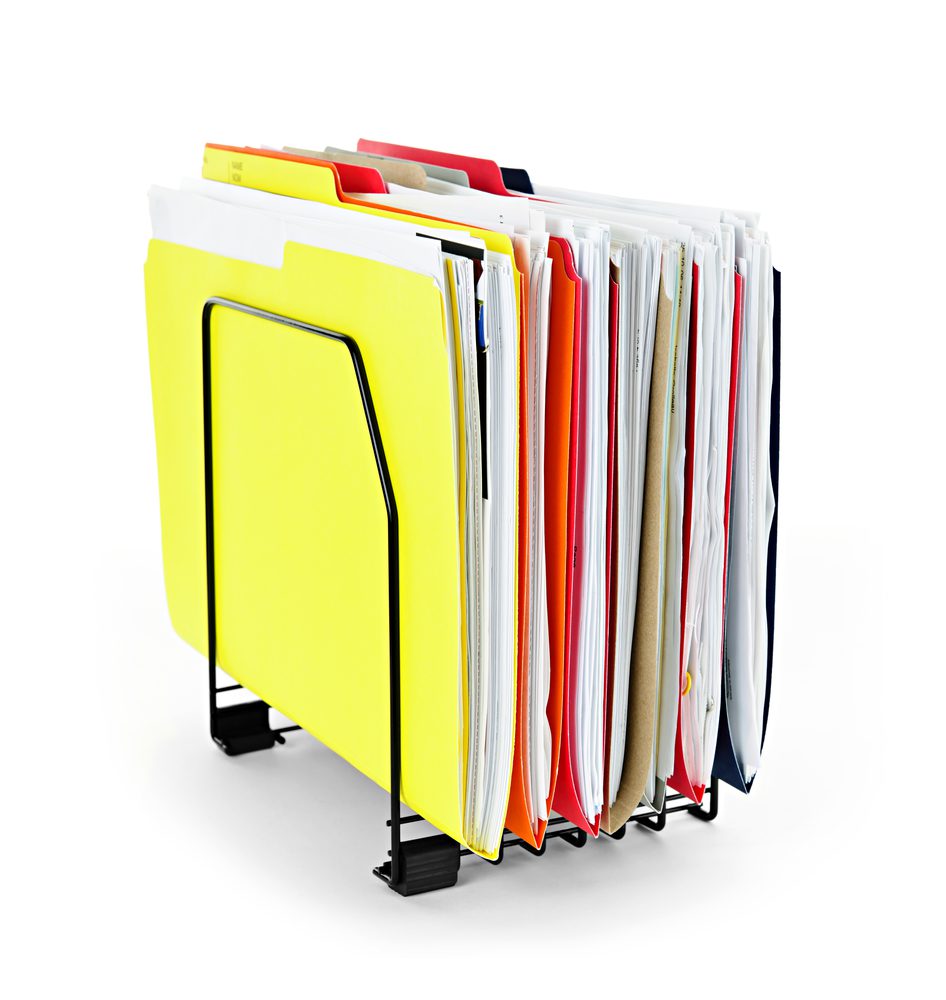Use colour coding to organize your office space
-
Psychological properties of colours
Before applying a colour-coded system to the office, learn the meaning behind popular colours to help dictate which hues to use and when.
- Red: Associated with energy and power, red is an intense colour. Since it quickly grabs the eye, use it to alert coworkers of something urgent.
- Orange: Less aggressive than red, orange is still an eye-catching, dominating colour. A hue closer to the shade of gold can mean luxury, wisdom, or wealth. Use it to label new or long-term projects that focus on the future or improving your business.
- Yellow: Also a great attention grabber, yellow signifies happiness, hope, and positivity and is commonly used for important items that cannot be ignored. Use it for production tasks or to communicate new ideas.
- Green: A symbol of growth and fertility, green symbolizes stability and healing power. Use it for financial tasks and environmental initiatives.
- Blue: As a calming colour, blue represents loyalty, intelligence, and focus. It’s also a trusting colour. Use it for brainstorming, presenting, and networking.
- Purple: A combination of blue and red, purple is a creative colour that symbolizes royalty and luxury. It’s great for creative tasks.
- Pink: A playful colour, pink is full of compassion. It’s a loving, intimate, and feminine colour. Save it for personal labels and special occasions.
- White: Associated with purity, white signifies success and perfection. Use it to signify simplicity and cleanliness.
- Black: A formal colour, black can be prestigious or authoritative. Use it to make other colours stand out and for formal events.

-
Organizing files by colour
When it’s necessary to save every piece of paper that touches your desk, it can be easy to misplace important information in a pile of white. To file papers you may need to reference later, create a color-coded system with folders.
Divide documents into categories—invoices, tax documents, office guidelines, etc.—and choose a colour to represent each category. Use folders or tabs in each designated colour to organize the categories. For file cabinets, choose an assortment of colored hanging folders, which are sturdy enough to hold most documents.
When passing documents between teams, it’s a good idea to assign colours to departments or tasks. Colored file folders help distinguish which documents need to head to the HR department or be reviewed by the financial team. If using plain manila folders, stick colored labels or tabs on each folder.
Multiple projects can be assigned a colour and organized in three-ring binders. Maintain the colour-coded system inside the binder to separate budget and creative documents.
If it’s time to archive documents, use storage bins in the colour-coded system to quickly identify what is inside.Colour psychology is the study of hues to determine the effects on human behaviour. It can be applied to many things in life like office organizing and productivity. Share on X
-
Colour code your calendar
A calendar filled with back-to-back meetings can be overwhelming and ineffective. Ease the stress by assigning colors to events—both work and personal—to get a better understanding of your day-to-day activities. Visualizing the events can help control how much time you allocate to each activity or project.
To categorize meetings, choose colors based on their psychological properties. Most calendar apps allow users to assign colours, but if you prefer traditional day planners, use sticky notes or coloured pencils to categorize.
- Red: Wednesday 11 a.m.—” Final Spreadsheet due”
- Blue: Tuesday 3 p.m. — “Brainstorm Session w/ PR”
- Green: Thursday 10 a.m. — “Budget Meeting”
- Yellow: Tuesday 9 a.m. — “Credit Card Bill Due” Wednesday 1 p.m. — “Order File Folders”
- Purple: Monday 2 p.m. — “Present Sales Pitch” Thursday 1 p.m. — “Review Mock-Ups”
- Pink: Friday 5 p.m. — “Happy Hour”
-
Take notes in colour
Writing notes on paper is a great concept—until those notes get lost among other notes and are never read again. Take the colour-coded calendar a step further by using the same coloured pen to take notes. Colour coding can also stimulate different parts of your brain and allow you to see connections previously overlooked.
In a budget meeting? Use a green pen to jot down notes. If a creative idea comes to mind that you don’t want to forget to bring up during a weekly brainstorming, use purple. When you flip back through your note pages, the system will allow you to quickly find what you’re looking for. But avoid too much color—if everything is highlighted, it’s difficult to tell what takes priority.
-
Colour code your inbox
If hundreds of unread emails leave you overwhelmed, assign colors to senders or subjects to quickly identify what needs attention. Many email systems have settings to adjust how emails are displayed in your inbox. Assign automatic colours to specific people, such as your manager, so those emails will stand out.
Messages can also be coded by subject line. If you’re working on a specific project, assigning that project name a colour will separate it from everyday emails.
Conclusion
Colour coding is meant to make your work life easier. Assign colours before you start a new project and limit the amount to avoid confusion. You shouldn’t have to spend time deciphering your colour code!
How do you use colour coding to keep yourself organized?
 Julie Stobbe is a Trained Professional Organizer and Lifestyle Organizing Coach who brings happiness to homes and organization to offices coaching you virtually using Zoom. She enjoys working with her clients to provide customized organizing solutions to suit their individual needs and situations. She reduces clutter, streamlines processes and manages time to help her clients be more effective in reaching their goals. Julie can coach you to break-free of the physical or emotional clutter constraining you from living life on your terms. Online courses are available to help instruct, coach and support your organizing projects. Get started by downloading Tips for Reorganizing 9 Rooms.
Julie Stobbe is a Trained Professional Organizer and Lifestyle Organizing Coach who brings happiness to homes and organization to offices coaching you virtually using Zoom. She enjoys working with her clients to provide customized organizing solutions to suit their individual needs and situations. She reduces clutter, streamlines processes and manages time to help her clients be more effective in reaching their goals. Julie can coach you to break-free of the physical or emotional clutter constraining you from living life on your terms. Online courses are available to help instruct, coach and support your organizing projects. Get started by downloading Tips for Reorganizing 9 Rooms.
Contact her at julie@mindoverclutter.ca
X – Facebook – Facebook group Organizing Mind and Space




I am so thankful I come across this post! Reading the post makes me want to arrange my things by using color coding and see how it affects me! Thanks for sharing this.
Colour coding works well for some people because at a glace you can find things more easily. Let me know how the reorganizing works for you. If you need help I can work with you virtual to help you with the set-up.
I once had an interview at a company that i’m applying for and the first thing that I noticed was their office was so dull. No color, its gloomy, and it comes with the sound of hands bashing on keyboards. It was an instant turn off. Before the employees, offices should follow the color schemes according to their desired environment. Great post!
I really enjoyed your comment. I never thought of the use of colour as a way to help someone determine if they would like to work for that company. But it certainly does tell a little about the employer. Thanks for your comment.
choosing an attractive and appealing colour scheme for your workspace is important, as it lights up and makes your office look more lively and creates a positive working environment,
I agree with you. If you don’t like your office than you won’t work in it. Sometimes that leads to having work in many different places and things getting misplaced and left incomplete.
Thanks to Julie Morris from UK Web host review for this informatics.
![Colour Psychology for Your Website [INFOGRAPHIC] - An Infographic from UKWebHostReview](data:image/svg+xml;base64,PHN2ZyB3aWR0aD0iMSIgaGVpZ2h0PSIxIiB4bWxucz0iaHR0cDovL3d3dy53My5vcmcvMjAwMC9zdmciPjwvc3ZnPg==)
Embedded from UKWebHostReview
I was emailed another great link to colour coding and branding. I hope you enjoy reading it. Color Meaning and Symbolism (The Ultimate Guide) https://symbolismandmetaphor.com/color-symbolism/